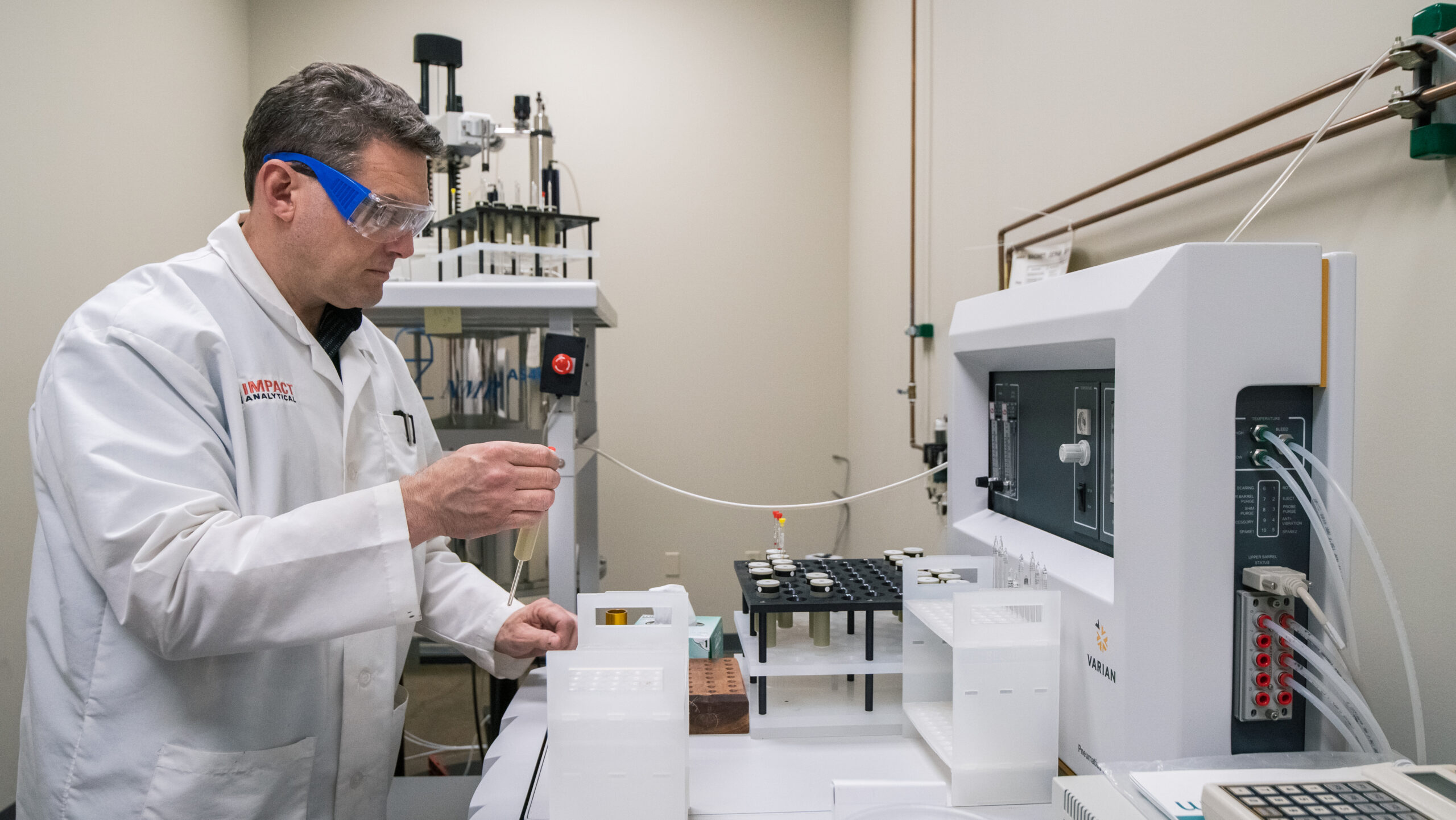-Techniques-
Nuclear Magnetic Resonance (NMR) Spectroscopy
NMR spectroscopy is an analytical technique used to determine the chemical molecular structure of a compound. NMR provides both quantitative and qualitative data on the composition of a sample. This technique can be used for quality control, for research, to identify an unknown, or to determine the content and purity of a sample.
A simplified description of NMR is that the sample, usually dissolved in a liquid, is placed into the instrument, which contains a magnetic field. A radio frequency pulse is then sent through the sample solution in order to orient the magnetic moments of the nuclei in the solution. As the magnetic moments relax, they exhibit a free induction decay. The free induction decay is Fourier transformed into an NMR spectrum. The NMR spectrum displays chemical shifts for the individual nuclei; and from these chemical shifts, the structure of the compound can be determined.
Capabilities
Impact Analytical currently has a Varian 400MHz NMR System spectrometer, equipped with a broadband Pulse-Field Gradient (PFG) probe for analysis of low frequency X nuclei (15N – 31P).
Typical analyses:
- proton and carbon-13
- silicon-29 and fluorine-19

The NMR also has variable temperature (-25 to 130 C) capabilities, suitable for analyzing polymers and other materials at high temperature or monitoring chemical reactions at low temperatures. Advanced one and two-dimensional experiments are available and necessary tools for the deconvolution of complex mixtures and materials, especially for pharmaceutical characterization.
These include:
- APT
- DEPT
- COSY
- HETCOR
- The use of PFG
Related Services
Actives Quantitation
Additive Analysis
Chemical Analysis
Clinical Release Testing
GLP & cGMP Testing
Material Characterization
Method Development & Validation
Molecular Weight Determination
Polymer Characterization
Problem Solving
Purity Testing
Quality Control Testing
Raw Material Characterization
Stability Testing
Related Testing Techniques
Ready to Get Started?
Give us a call and speak with an actual scientist.

